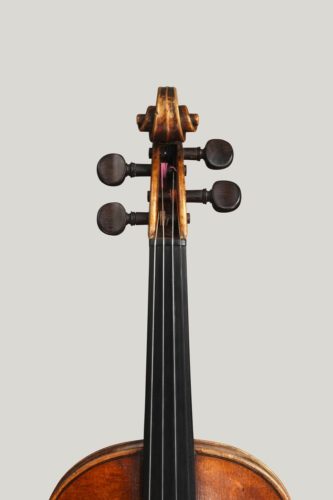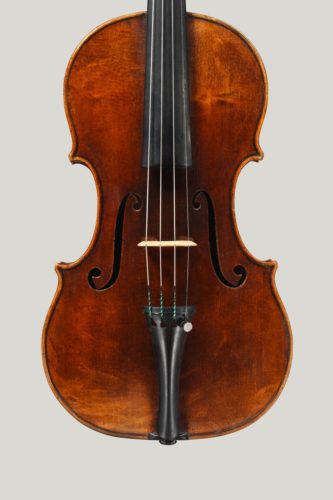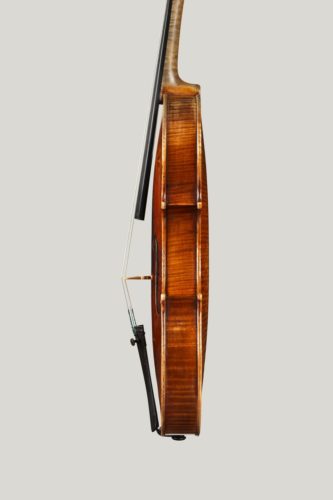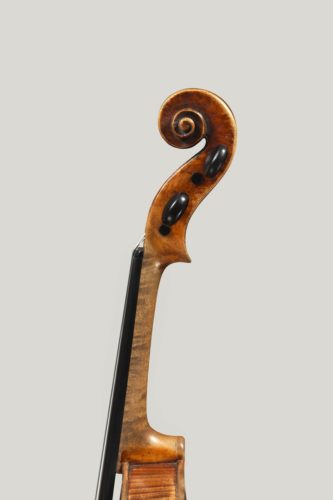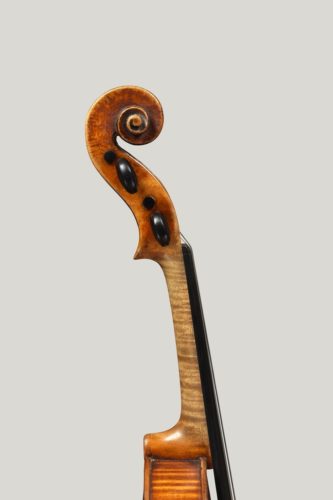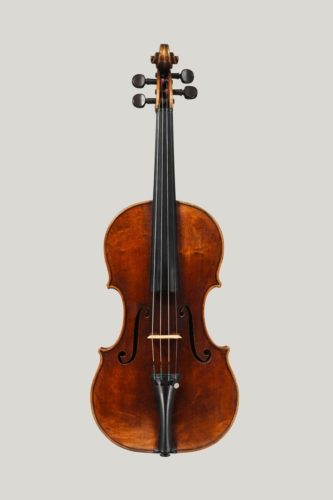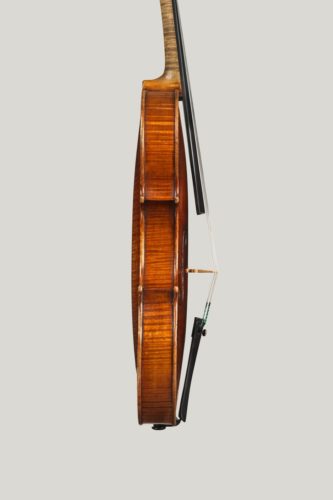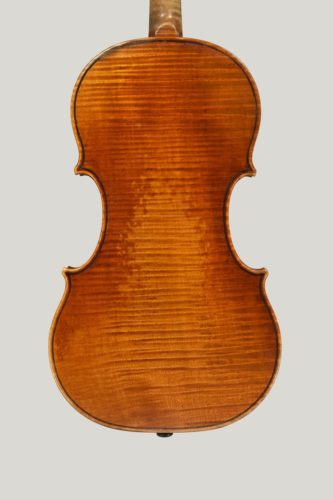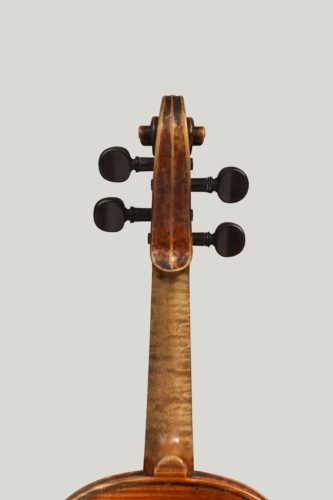Jean-Baptiste Vuillaume
Violin made by Jean- Baptiste Vuillaume in Paris in 1848-1850. Ingerine Dahl plays on this instrument.
Jean-Baptiste Vuillaume was undeniably the greatest French luthier. Gifted as a craftsman, businessman and connoisseur, he was instrumental in making Paris the capital of the violin trade in the second half of the 19th century, and a pioneer of the art of making antiqued replicas of master instruments.
Born in 1798 in Mirecourt, the traditional centre of violinmaking in France, he moved to Paris in 1818 to work for the leading shops. By 1823 he was making instruments with his own labels; by 1828 had completed at least 100, and had opened his own business on the rue des Petits-Champs, at the heart of the Parisian trade. In 1850, when this violin was made, his shop was the leading atelier in all of Europe, trading, repairing and restoring master instruments as well as manufacturing new instruments at a tremendous rate.
Stradivari was already acknowledged as the master, upon whose patterns and style most 19th century makers worked. Vuillaume took a step further by taking his fully varnished instruments and giving them an antiqued finish, imitating not only the model and form of the originals, but also the aged appearance of the varnish. A few other makers in Europe were developing similar ideas, but Vuilluame’s work was by far the most consistent, and produced in large numbers in his workshop.
In the 1830s a sea-change in tastes was effected by Nicolò Paganini, who took the concert halls of Europe by storm, using not a Stradivari violin but a Guarneri del Gesù of 1743, known as the “Cannon” for its powerful and far-reaching sound. Vuillaume was quick to take up the idea, and was one of the first makers to consciously imitate Guarneri’s idiosyncratic and spontaneous style.
The violin belonging to Dextra Musica is dated 1850, and is particularly interesting in being ostensibly a copy of the Guarneri del Gesù owned by Ole Bull himself, one of the more extreme examples of del Gesù’s late style, made in 1744, the year of his death. Vuillaume’s copy is not an academically accurate rendition of the original; the only really distinctive reference to the “Ole Bull” can be observed in the extremely extended and asymmetrical form of the soundholes.
The scroll is a stylised version of Guarneri’s earlier work, missing the emaciated and twisted form of del Gesù’s late masterpiece, and the arching belongs to Guarneri’s middle period, rather than the very sunken forms he had evolved by 1744. The beautifully worn and patinated orange-red varnish is recognisable as Vuillaume’s standard recipe. Vuillaume clearly made use of the finest materials at his disposal, regardless of the original.
The back in particular is made of the most striking single piece of intensely figured maple; the “Ole Bull” itself has a two-piece back with a downward sloping figure, and its varnish is very pale in colour and thinly textured. It is however unfair to judge Vuillaume’s pioneering imitative work against more modern copies, made with an almost scientific devotion to every nuance of the original. He evolved his own distinctive style even within the inherent restrictions of copying earlier masterpieces.
Vuillaume is greatly revered as an innovator and craftsman in all aspects of the violin, and his instruments are maturing towards the tonal quality of the instruments that inspired them.
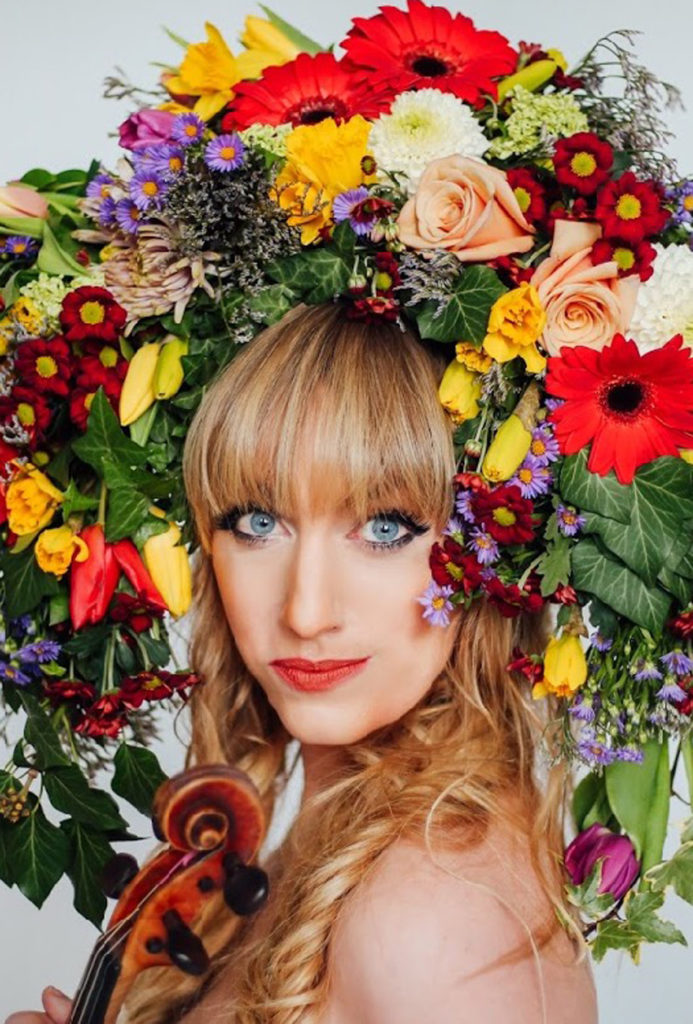
Ingerine Dahl
Ingerine Dahl (b. 1980 in Stavanger) is an avid soloist and chamber musician and has received several awards. Since 2004 she has had the position as second concertmaster of the Stavanger Symphony Orchestra.
